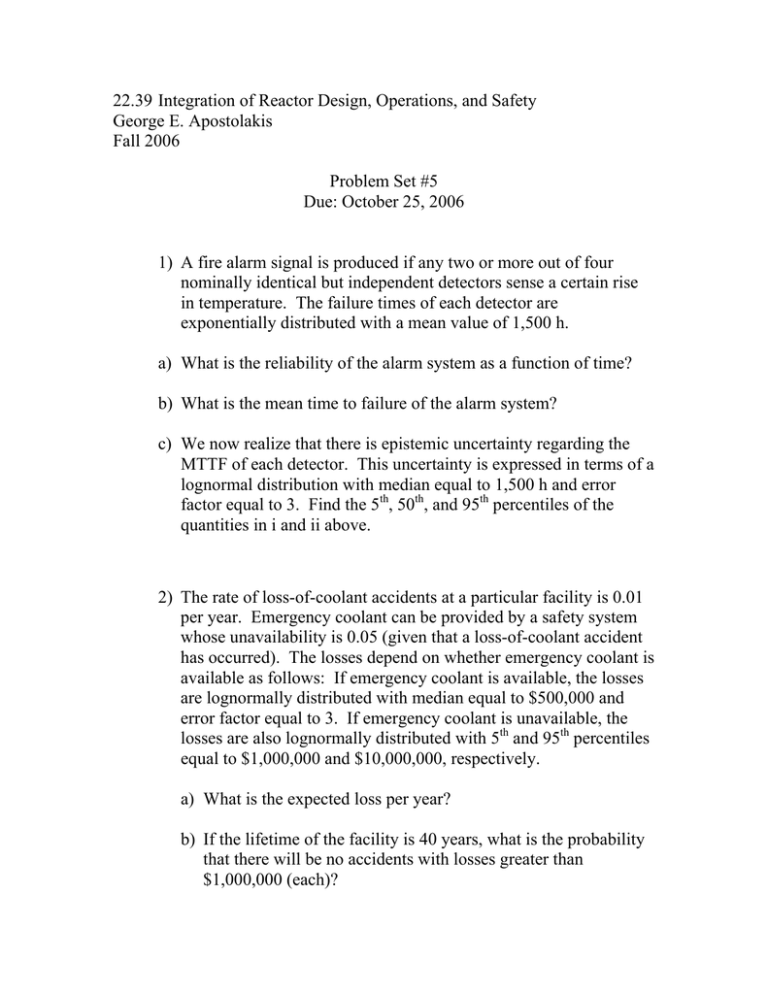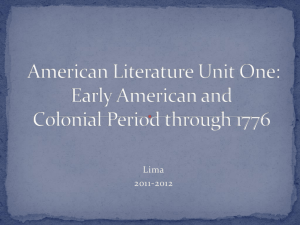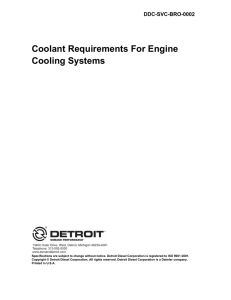Document 13600790
advertisement

22.39 Integration of Reactor Design, Operations, and Safety George E. Apostolakis Fall 2006 Problem Set #5 Due: October 25, 2006 1) A fire alarm signal is produced if any two or more out of four nominally identical but independent detectors sense a certain rise in temperature. The failure times of each detector are exponentially distributed with a mean value of 1,500 h. a) What is the reliability of the alarm system as a function of time? b) What is the mean time to failure of the alarm system? c) We now realize that there is epistemic uncertainty regarding the MTTF of each detector. This uncertainty is expressed in terms of a lognormal distribution with median equal to 1,500 h and error factor equal to 3. Find the 5th, 50th, and 95th percentiles of the quantities in i and ii above. 2) The rate of loss-of-coolant accidents at a particular facility is 0.01 per year. Emergency coolant can be provided by a safety system whose unavailability is 0.05 (given that a loss-of-coolant accident has occurred). The losses depend on whether emergency coolant is available as follows: If emergency coolant is available, the losses are lognormally distributed with median equal to $500,000 and error factor equal to 3. If emergency coolant is unavailable, the losses are also lognormally distributed with 5th and 95th percentiles equal to $1,000,000 and $10,000,000, respectively. a) What is the expected loss per year? b) If the lifetime of the facility is 40 years, what is the probability that there will be no accidents with losses greater than $1,000,000 (each)? 3) Consider the following bridge network: A 1 3 5 2 B 4 a) Obtain, by inspection, the minimal cut sets. b) Determine the minimal-cut-set representation (i.e., the structure function) of the event "unsuccessful signal transmission." c) Calculate the system failure probability by assuming that the components are independent and their failure probabilities are: q 1 = q 2 = q 3 = q 4 = 0.1, q 5 = 0.07 d) Is the rare-event approximation reasonable for this system? e) Calculate the Fussell-Vesely and Risk Achievement Worth importance measures for each component. 4) A ship has two Diesel generator units both of which must function in order to supply the required load. The times to failure of each generator from the start of a voyage follow an exponential distribution with a mean value of 1,200 h. A voyage lasts two weeks. What is: a) The probability that the ship will be without electric power? b) The mean time to this event, if the voyage lasts for a very long time? c) If there is a regulatory requirement that the probability of losing electric power should be less than 5%, what is the maximum allowed length of a voyage? d) Suppose now that there is epistemic uncertainty about the mean values specified by a normal distribution with mean equal to 1,200 h and standard deviation 100 h. What is the maximum allowed length of a voyage, if the regulatory requirement stated in (c) applies to the epistemic 95% percentile?






